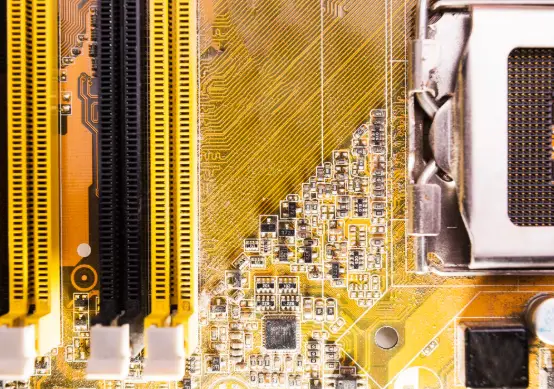
If you have an Intel hybrid CPU from the 12th, 13th, or newer generations, it probably has both Performance-cores (P-cores) and Efficient-cores (E-cores). These E-cores make it easier to do more than one thing at once and run background processes by taking care of simple tasks while P-cores work on more complex ones.
But sometimes the BIOS turns off E-cores by default, or you might have turned them off earlier to fix performance problems. You can turn on E-cores manually in the BIOS settings if you have an ASUS motherboard.
This guide shows you how to unlock your processor’s full potential step by step.
What Are E-Cores?
Intel first used E-Cores, or Efficient Cores, in its Alder Lake hybrid CPU design. These cores are made to be energy-efficient and are best for running background tasks or tasks that don’t use a lot of power.
P-Cores (Performance Cores) work with E-Cores to handle heavy-duty tasks like gaming, rendering, and software development.
Why Enable E-Cores?
Here are some key reasons why you might want to enable E-cores:
-
Better multitasking performance
-
Increased power efficiency
-
Improved thermal control
-
Full utilization of CPU features
-
More consistent performance in background-heavy tasks
Especially if you’re running Windows 11, the Thread Director feature can intelligently assign tasks to the appropriate cores—only if both P-cores and E-cores are enabled.
Step-by-Step: How to Enable E-Cores in ASUS BIOS
To enable E-cores on your ASUS motherboard, follow these steps carefully.
Step 1: Enter BIOS
-
Restart your computer.
-
During boot, press the
DelorF2key repeatedly (depending on your motherboard model) until the BIOS screen appears.
✅ Tip: Make sure you’re using a USB keyboard; wireless ones sometimes delay input during boot.
Step 2: Switch to Advanced Mode
-
Once inside BIOS, press
F7to switch from EZ Mode to Advanced Mode. -
Navigate to the Advanced tab at the top.
Step 3: Locate CPU Configuration
-
Go to
Advanced→CPU Configuration. -
Look for the Active Efficient Cores or E-Core Enable/Disable setting.
-
On some motherboards, it may be labeled as
Intel Efficient Coreor justEfficient Cores.
-
Step 4: Enable E-Cores
-
Change the setting to Enabled or set the number of E-cores you want to activate.
-
If the value is set to 0, your E-cores are disabled.
-
You can either set it to Auto (lets the motherboard manage it) or enter the maximum number of E-cores your CPU supports.
Step 5: Save and Exit
-
Press
F10to save changes and exit. -
Confirm when prompted, and let the system reboot.
Once rebooted, your operating system will now detect and use E-cores.
Quick Reference Table
Here’s a simple table to show what to look for in the ASUS BIOS interface based on different CPU models:
| Intel CPU Generation | BIOS Setting Name | Suggested Value | BIOS Menu Path |
|---|---|---|---|
| 12th Gen (Alder Lake) | Active Efficient Cores | Enabled / Auto | Advanced > CPU Configuration |
| 13th Gen (Raptor Lake) | Efficient Cores Control | Enabled / Auto | Advanced > CPU Configuration |
| 14th Gen+ | E-Core Configuration | Maximum / Auto | Advanced > CPU Configuration |
⚠️ Note: BIOS labels and options can vary slightly depending on your motherboard model and BIOS version. Always update to the latest BIOS if possible.
How to Confirm E-Cores Are Enabled
After rebooting, you can verify that E-cores are enabled using these tools:
1. Task Manager (Windows)
-
Press
Ctrl + Shift + Esc -
Go to the Performance tab > CPU
-
Hover over the logical cores to see E-cores (usually have lower clock speeds)
2. CPU-Z
-
Free software that shows you the architecture breakdown, including core types.
3. Intel Extreme Tuning Utility (XTU)
-
Gives detailed control and monitoring for Intel CPUs.
FAQs
What happens if E-cores are disabled?
When E-cores are disabled, background tasks are forced onto P-cores, which may cause slight performance drops in multitasking. It can also lead to higher power consumption and thermal output.
Can I disable E-cores for gaming?
Yes, but it’s not always necessary. Some older games may run better with only P-cores active. However, newer titles optimized for Windows 11 and hybrid CPUs often benefit from having both core types enabled.
Why aren’t my E-cores showing in Task Manager?
This can happen if:
-
E-cores are disabled in BIOS.
-
BIOS is outdated.
-
CPU drivers or chipset software aren’t properly installed.
Do all Intel CPUs have E-cores?
No. Only Intel’s hybrid architecture CPUs (starting from the 12th Gen onwards) have a combination of P-cores and E-cores. Older CPUs like the 10th or 11th Gen do not include E-cores.
Final Tips
-
Keep your BIOS updated: Newer firmware versions add better compatibility and more accurate labels for hybrid CPU features.
-
Use “Auto” settings if unsure: Letting the motherboard manage E-core behavior can prevent misconfigurations.
-
Check Windows power plans: Balanced or Performance modes can also impact how cores are used.
When you enable E-cores in your ASUS BIOS, you let your Intel CPU work the way it was meant to: balancing speed and efficiency for better everyday computing. Using all of your processor’s cores can speed up and make your system more responsive, whether you’re a gamer, a creative professional, or just someone who keeps a dozen browser tabs open.
Also Read: Exploring the Mysteries Behind CompatTelRunner.exe

Leave a Reply